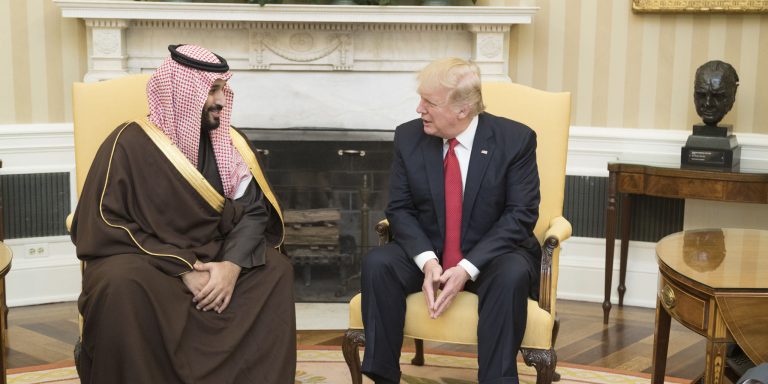INTELBRIEF
December 6, 2017
TSC IntelBrief: Iran’s Hardliners Ascendant

• U.S. and Saudi efforts to counter Iran’s regional influence have backfired, significantly increasing the popularity and influence of Tehran’s hardline factions, which threatens to shift Iranian strategic, regional, and domestic policies in ways detrimental to the U.S. and its allies.
• Hardline Iranian factions skeptical of the landmark 2015 multilateral nuclear deal will resist any efforts by the U.S. or Europe to limit Iran’s development of longer range ballistic missiles.
• As Iranian influence continues to grow across the Middle East, so too will Iran’s support for its proxy militias in Syria, Iraq, Lebanon and Yemen.
• Emboldened hardliners may use their clout to undermine Iranian President Rouhani’s more relaxed enforcement of regulations ruling social behavior, and to increase suppression of Iran’s vibrant domestic press.
U.S.-backed efforts by Saudi heir apparent Mohammad bin Salman to challenge Iran more aggressively on a wide range of fronts appear to have had the opposite effect to what the Crown Prince expected. Far from isolating Iran or forcing its regional retrenchment, the Saudi strategy has empowered Iranian factions who have always sought to “export” Iran’s 1979 revolution and to challenge the United States and its allies. Crown Prince Mohammad’s efforts to undermine Iran’s chief regional proxy, Hizbollah, in its home base of Lebanon, summarily failed to isolate the group or paint it as a sectarian arm of Iranian regional policy. Riyadh’s policies have also come close to accomplishing Tehran’s longstanding goal of causing the collapse of the Gulf Cooperation Council (GCC), which abruptly ended its annual summit on December 5. Two days of talks had been scheduled, but Kuwaiti Emir Sheikh Sabah al-Ahmad Al Sabah declared the summit over after a 15-minute closed session. The move followed an announcement by Saudi Arabia and the United Arab Emirates (UAE) of the formation of a new economic and military partnership, unrelated to the GCC.
Hardline Iranian factions had been in eclipse, losing every major national election since 2013 while acquiescing to moderate president Hassan Rouhani’s 2015 nuclear agreement with six major powers, including the United States. But Saudi policy errors, combined with the Trump Administration’s determination to paint Iran as the primary source of the region’s ills, have resurrected the hardliners political fortunes. Rather than moderate President Hassan Rouhani, the most popular figure in Iran today is said to be Major General Qasem Soleimani, commander of the Islamic Revolutionary Guard Corps – Qods Force (IRGC-QF) and architect of Iran’s recent successes in Syria, Iraq, and Lebanon. White House policies, including President Donald Trump’s refusal to certify that Iran is complying with the nuclear deal, have added resonance to Supreme Leader Ali Khamenei’s distrust of the U.S. If the hardliners newfound political buoyancy is sustained, it could see one of the faction’s leaders elected president in 2021, and the selection of another hardline Supreme Leader when Khamenei passes from the scene. Even without an electoral victory, emboldened Iranian hardliners may use their clout to undermine President Rouhani’s more relaxed enforcement of regulations ruling social behavior, and increase suppression of Iran’s vibrant domestic press.
The hardline ascendancy in Iran carries potentially dramatic implications for the United States and Europe. Because the hardliners largely consider the nuclear accord to be surrender, they may seek to force Tehran to withdraw from the pact, should Congress or the White House impose significant new sanctions. The hardliners are already resisting French calls for new limits on Iran’s ballistic missile program. The IRGC’s deputy commander, Hossein Salami, said in late November that Iran might develop missiles with ranges beyond its current 1,300-mile capability if Iran is threatened by Europe. That tempered earlier remarks by IRGC Commander Mohammad Ali Jafari that Iran might voluntarily refrain from developing extended range missiles.
The hardline revival in Iran threatens to reshape the regional chess board as well. With an ascendant position in Syria, they will likely reject proposals by Russia, Turkey, or the United States to dismantle the military and militia infrastructure Tehran built to keep Syrian President Bashar al-Assad in power. Nor is Iran likely to agree to a political solution that marginalizes Assad. More likely, the IRGC-QF will use that infrastructure in Syria to boost support for Iran’s main regional proxy, Lebanese Hizbollah. That group too has prospered from Saudi policy failures, though its presence in Syria is threatened by Israel, which insists Iran not use Syria to impinge on its security. The IRGC-QF is also maintaining its network of militias in Iraq as an instrument of influence there, though Tehran might support the militias' evolution into political movements capable of competing in Iraq’s April 2018 national elections. In Yemen, the IRGC-QF is likely to continue to supply the Zaidi Shi’a Houthi rebels with ballistic missiles, similar to those they recently fired into Saudi Arabia and allegedly, into the UAE. The Houthi prospects in Yemen’s civil war improved on December 4 with the death of former Yemeni President Ali Abdullah Saleh, who had broken with the group in recent days.
It is not clear if U.S. and Saudi policies will result in outright conflict with Iran. However, it is clear that these policies have provided Iran’s hardliners with new opportunities to exert influence within Iran and in the broader region.
For tailored research and analysis, please contact: info@thesoufancenter.org
.
.